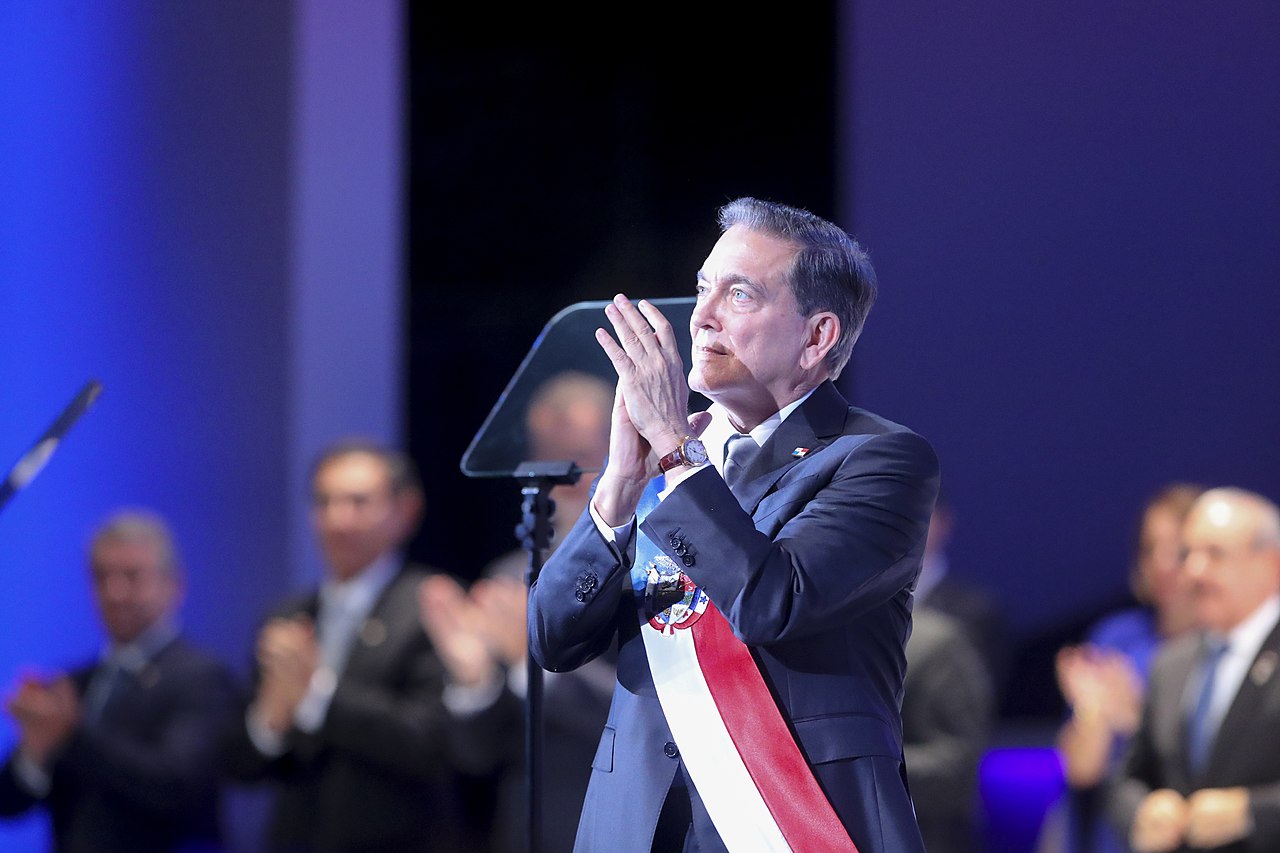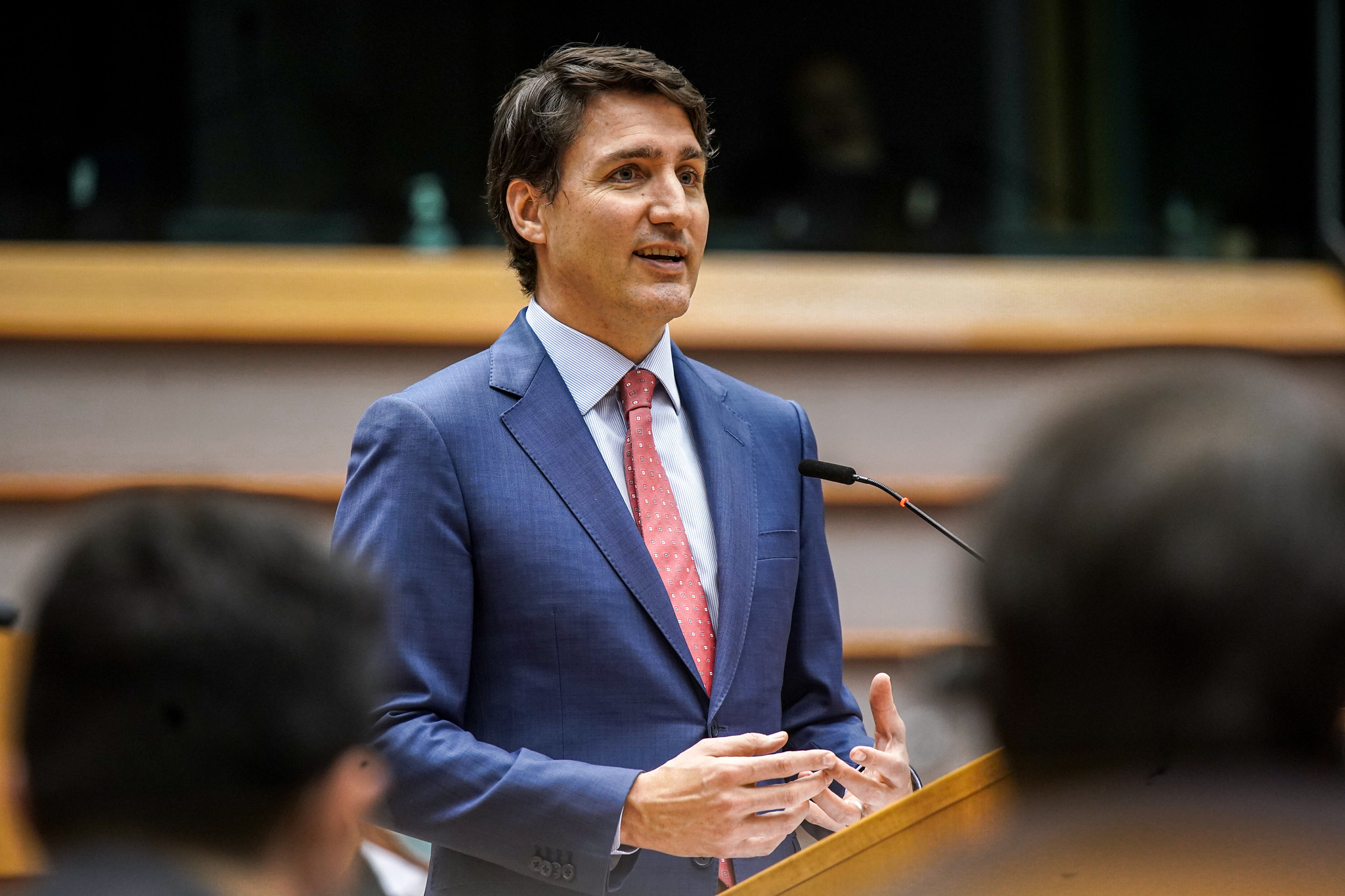For months, Indigenous activists, trade unions, and youth organizations in Panama have been on the streets, demonstrating against the extension of a massive Canadian-owned mine in the middle of a rainforest.
[Originally published at marxist.ca]
This uprising must be supported and extended by the working class in Canada against our common enemy: the Canadian ruling class.
Panama’s ‘social upheaval’
Toronto-based mining company Quantum Minerals has been scrambling to maintain its hold of Panama’s wealth, specifically in the massive Cobre Panama mine.
Ever since the Cobre Panama mine was established in the mid-1990s, it has been incredibly unpopular. It has been, indeed, the subject of decades of protests and constitutional challenges.
Drafted while the country remained occupied by the U.S. military after Operation “Promote Liberty,” the deal was pushed through without any environmental impact studies or Indigenous consultations.
The open-pit mine, located in an Indigenous region in the rainforest, is the largest of its kind. Its environmental record is predictably appalling—threatening nearly 500 rivers and dozens of endangered species of plants, reptiles, and tropical birds.
Back in 2011, this anger erupted in a massive march of Ngäbe-Buglé Indigenous protesters, across the country, against mining in their territory.
That march was brutally repressed. As one NGO observed at the time, police opened fire on the crowd, killing at least two and injuring dozens more. When the Ngäbe-Buglé rose up again the next year, blockading the mine and the San Felix highway, they faced off against riot police.
But this time the protests have been bigger.
 The government of Laurentino Cortizo was unpopular before this autumn / Image: Enmanuel Benavides, Wikimedia Commons
The government of Laurentino Cortizo was unpopular before this autumn / Image: Enmanuel Benavides, Wikimedia Commons
The government of Laurentino Cortizo was unpopular before this autumn. In 2022, a nationwide strike shook the country, in opposition to the government’s austerity measures, including a 10 per cent wage cut for its workers.
This year, that rage reached new heights.
Under pressure from its creditors, Quantum Minerals, and the Canadian government, the Cortizo government agreed to expand the mine by 2,000 acres and extend its license by at least 20 years. Once again, the country’s youth, unions, and Indigenous groups took to the streets.
As Foreign Policy observed, the deal “plunged Panama into protest, triggering its most significant episode of social upheaval in decades.”
‘This is everyone’s fight’
What started with protests and blockades by Ngäbe-Buglé Indigenous people extended into a wider protest movement in the cities and ports.
The Indigenous protests were joined across the country by mass protests—drawing in youth, education groups, and the country’s main trade union federation, the Sindicato Unico Nacional de Trabajadores de la Industria de la Construccion y Similares (National Union of Workers of Construction and Similar Industries, or SUNTRACS). They were, soon enough, aided by a “flotilla” of 16 fishing boats who stopped all movement in and out of the mine’s nearest port, forcing the company to halt its operations.
As SUNTRACs said in a statement: “This is the handing over of our land and our country to a multinational company. We will be here, until the people who approved this law, roll it back. Because without a fight there is no victory! Fight. Fight! This is not one person’s fight! This is everyone’s fight!”
For years, workers and youth have been told by the nation’s creditors that there is no money for decent work, wages, and services. Meanwhile, First Quantum and mining giants like it have made a killing from the country’s wealth.
Last year alone, Cobre Panama produced 776 kilotonnes of copper, accounting for about 40 per cent of First Quantum’s revenue. According to its own reports, First Quantum extracted the material at just $1.76 per pound—including wages, machinery, and other costs—to sell it at $4-5 per pound.
The company’s concession agreement is even more regressive. Every year the company reaps more than $2.5 billion in profit, while paying Panama back just $35 million. Meanwhile, this year, the company agreed to pay out an additional $375 million to extend the agreement—a tiny share of its returns and by no means enough to address the $47 billion Panama’s creditors demand.
As one protester said: “Politicians are worse than ever, corrupt in every way…They sell our land for nothing. But what makes me feel hopeful is that we are starting to wake up.”
By Nov. 12, the Associated Press reported, these demonstrations and blockades had effectively “paralyzed” the country. And by Nov 29, even after 1,157 people had been arrested, 151 of whom were minors, the movement continued.
First Quantum brings Panama to court
Eventually, the country’s Supreme Court caved to the movement and, once again, ruled that the mine is unconstitutional.
But First Quantum has not reneged.
Already, First Quantum Minerals has formally filed an arbitration claim against the government of Panama, to pressure the government into neglecting its own Supreme Court’s ruling.
According to the company, regardless of the ruling, it “remains committed to overcoming the current operational challenges at Cobre Panama.”
Beyond this immediate court challenge, moreover, so long as companies like First Quantum dominate the economic life of countries like Panama, they have enormous power. The mine’s economic importance is huge—Cobre Panama accounts for two per cent of all employment in the country, three per cent of its GDP, and 80 per cent of exports. Already since the court ruling, Panama has had to cut its GDP growth outlook substantially.
This power must be taken away if a social crisis is to be avoided.
Canadian imperialism’s tentacles
First Quantum and the Canadian state have worked dutifully to ensure the plunder continues.
In addition to working to suppress its own workers’ wages, forcing them to the brink of a strike last year, First Quantum has also leaned on the Canadian state to pressure Panama into keeping its taxes ultra-low.
Beyond the immediate interests of First Quantum, the company has key links to ScotiaBank and Barrick Gold. Furthermore, its assets are dominated by large Canadian and U.S.-based institutional investors like BlackRock, Fidelity, RBC Asset Management, and Vanguard.
Beyond these mining companies, the whole of Western manufacturing bolsters its profits with ultra-cheap copper. As Reuters explains, copper prices, given the metal’s widespread use in industrial processes from construction to power and manufacturing, are seen as a key indicator for capitalism generally—and Cobre Panama contains 1.5 per cent of the world’s copper.
Panama and other countries in the region are considered “poor countries,” but their wealth is essential to keeping the Canadian ruling class rich.
Accordingly, as the company entered talks with Panama’s industries minister Federico Alfaro to renegotiate its concession agreement, it sought assistance from Canada’s government.
In an interview with Reuters, an unnamed insider confirmed that Canada’s cabinet was in touch with First Quantum to ensure its profits received “downside protection.”
“Obviously, we have a keen interest in seeing resolution to this,” they said. “We have also heard from [the company] to ensure that Minister Ng and our team stays engaged in keeping this on the front burner.”
The Canadian state claims its foreign policy aims to uphold the “rule of law” and promote “democracy.” But here we see Canada pressuring a government to rewrite its own laws, overturn Supreme Court decisions, and brutalize Indigenous people to protect its mining interests.
Fight imperialism
 Trudeau boasts about Canadian imperialism’s “longstanding and mutually beneficial relationship with Panama” / Image: European Parliament, Flickr
Trudeau boasts about Canadian imperialism’s “longstanding and mutually beneficial relationship with Panama” / Image: European Parliament, Flickr
Trudeau boasts about Canadian imperialism’s “longstanding and mutually beneficial relationship with Panama.” But, in reality, that relationship, marked by the export of Canadian machinery and manufactured goods and the import of Panama’s minerals at ultra-low cost, has left workers and youth across Panama poor, and it has only been maintained by repression.
This is the “relationship”—the domination of Panama by Canadian imperialism—that youth, workers, and Indigenous people have risen up against.
But no other “relationship” is possible on the basis of capitalism. At bottom, capitalism is about the net transfer of wealth from the poor to the rich. Capitalist states exist to maintain this transfer.
It’s why the whole Canadian ruling class is dripping in blood—blood from workers and the oppressed at home and abroad.
The same Canadian imperialism at work in Panama has pushed Mexican authorities to crush strikes by miners in Durango to protect the profits of another Canadian mining giant. Elsewhere, Canada has backed coups and coup attempts in Brazil, Honduras, Bolivia, Peru and Venezuela to protect the interests of the ruling class. At home, the Canadian state is at work surveilling and brutalizing Indigenous protesters to protect the interests of Canada’s mining and oil companies.
The “social upheaval” in Panama is a model for workers across the world. Here, an uprising of Indigenous people combined with the labour movement against their common oppressor. Workers and youth in Canada and Panama face a common enemy in the Canadian capitalist class. It must be fought with a revolutionary movement, internationally.
A socialist program of production would seize the wealth of society from the ruling class and put it in the hands of workers and the oppressed. It would allow for decent work, jobs, housing, and livelihoods for all and the possibility of genuine liberation for Indigenous people, on the basis of solidarity rather than plunder.

